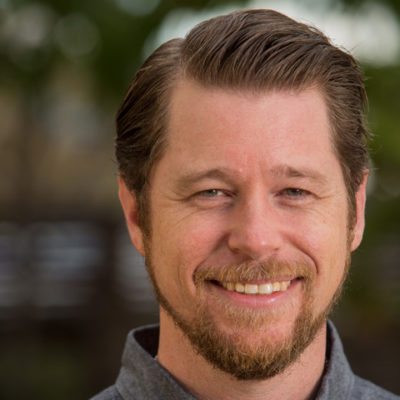 The National Fund network consists of dozens of effective local workforce development professionals leading efforts in their communities to connect individuals to work and to provide businesses with skilled employees. Their skills and insights drive the National Fund, and we want to introduce new and established directors in our Meet National Fund Leaders blog series.
The National Fund network consists of dozens of effective local workforce development professionals leading efforts in their communities to connect individuals to work and to provide businesses with skilled employees. Their skills and insights drive the National Fund, and we want to introduce new and established directors in our Meet National Fund Leaders blog series.
The following conversation with Rob Hope was lightly edited and published in full.
What is the Bay Area Workforce Funders Collaborative, and which organizations supports its efforts?
The Bay Area Funders Collaborative strives to create a workforce system that supports a diverse and equitable Bay Area economy where all workers can live and thrive. We currently have eight member organizations: the Grove Foundation, the James Irvine Foundation, JPMorgan Chase & Co., Kaiser Permanente, the Walter and Elise Haas Fund, The Workers Lab, the Y & H Soda Foundation, and the San Francisco Foundation who also serves as the backbone of the Collaborative. We make grants, host learning community forums, and convene cross sector conversations with the goal of evolving our region’s workforce system into one that better meet the needs of the Bay Area’s low wage workers and employers, is aligned with the new forms and functions of work, and is able to adapt more nimbly to changing economic conditions.
Why does the Bay Area need a collaborative focused on workforce development?
As the cost-of-living in the Bay Area increases dramatically every year, income inequality is on the rise. It has become increasingly difficult for many Bay Area residents, especially people of color, immigrants, and formerly incarcerated individuals, to afford to stay in the region. This is most visible in the thousands of working people living in homeless encampments in our communities, unable to afford housing despite the thriving local economy. There is a shortage of quality, living wage jobs in the Bay Area, especially within reasonable commutes of the neighborhoods where low-wage workers live.
Many organizations and policymakers in our region and the state are focused on identifying or creating quality middle-wage jobs. To ensure those jobs go to low income Bay Area residents, our workforce system needs to get better at adequately preparing people to obtain and succeed in those jobs, and become more responsive and adaptable to keep pace with our rapidly changing economy—that’s the transformation our Collaborative seeks to fuel.
What work were you doing prior to joining the collaborative? What insights do you think your prior experience brings to this new role?
Since 1999 I’ve held various positions relevant to my new role, including doing program evaluation and policy analysis at the Vera Institute of Justice in New York, studying public policy at UC Berkeley’s Goldman School, five years working in and managing employment programs for formerly incarcerated people at Goodwill/Easter Seals in St. Paul, MN, and most recently serving as Chief Program Officer at Rubicon Programs, an East San Francisco Bay anti-poverty organization with a strong workforce development program. Many aspects of my prior experience inform the lens I bring to the Collaborative. But the one that led me to shift from direct service into philanthropy is the recognition that while most workforce development programs leave people better off, too few of them provide the kinds of services and support people need to fundamentally change the course of their lives, propelling their families toward economic mobility. Our workforce system can do better—we need to do better—to have a chance at reversing the dramatic income inequality in our region. Philanthropy is uniquely situated to use the levers of funding, convening, communications and coalition building needed to accomplish this ambitious goal.
What are you most interested in learning from the National Fund network and testing in the Bay Area?
I’m really excited to learn how workforce collaboratives in other parts of the country are approaching systems change work with a racial and economic justice lens. The workforce system has a sort of “gravitational pull” that tends to make conversations around systems change very narrow, bound by constraints and assumptions of what is possible that have formed over many decades of complicated and top down policies and programs. We need to invite new voices into the conversation to reimagine how our system functions and what it can accomplish—I look forward to getting ideas from other collaboratives on how they are engaging people who have historically not been a part of design and decision-making in the workforce system.
What is on the horizon for the collaborative that excites you?
One part of our strategy focuses on making data about what works in the system, and for whom, more widely accessible to both institutional decision makers (e.g. funders, programs, public agencies) and also consumers and workers. To understand how to make a system more effective we need to understand more clearly which parts work now, and where the gaps are. We also need tools that illustrate in an accessible way how the current system is structured, to empower non-workforce experts to bring fresh ideas and perspectives into the conversation. In my three months since joining the Collaborative, I have had at least ten conversations with people and groups across all sectors, both locally and nationally (including Bryan Lindsley at MSPWin in Minnesota, who I met through the National Fund!), who are working on the same issue from different angles. I see an exciting opportunity for the Bay Area Workforce Funders Collaborative to leverage our resources, relationships, and proximity to the innovative data minds in Silicon Valley to convene a conversation around this issue, and build a cross-sector network working together to bring more data accessibility and transparency to the workforce system.





